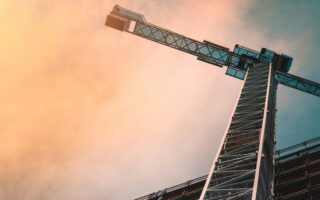Design and Construction Defect Claims: Overview and Defense Strategies
By Angela D. Caffey, Heather M. Beam • Nov 10, 2022 • In LexisNexis
There are several situations that can lead to claims against a designer or contractor. The most common scenarios are project delays due to defects or deficiencies, poor coordination or communication with the owner or other members of the design/construction team, or the discovery of defects during or after the project. Less common situations include claims involving construction accidents or personal injuries that occur within the construction area. This practice note discusses the basics of a defect claim against a designer or contractor. These types of claims are heavily governed by state-specific law, so it is important to research the requirements in your state.
Party Roles in Design and Construction Defect Claims
Generally, there must be a relationship between the parties to bring a design or construction defect claim. Most commonly, a designer or contractor owes a duty to the client. However, there are situations in which a party may be sued by others, such as a claim by the general contractor against the architect. As a result, it is important to understand the general roles of parties in a design and construction project.
Every project starts with an owner or developer. In some projects, those parties may be the same entity. However, in other projects, the developer may be the party that retains the design team and the construction team, which means that liability will pass through the developer in a future claim. For simplicity, the practice note assumes that the project has a single entity as both the developer and the owner.
There are two general ways that projects can be structured: (1) the owner retains the architect, who then retains sub-consultant engineers; or (2) the general contractor retains the architect and/or engineers (commonly referred to as a design-build project). Under the first scenario, the architect typically contracts with several engineers, including the civil engineer, structural engineer, and mechanical, electrical, and plumbing (MEP) engineer. In these situations, the architect is known as the “prime” architect. In some projects though, the owner contracts directly with the civil engineer, instead of the civil engineer flowing through the architect. The owner also typically contracts directly with the general contractor, and then the general contractor retains specific subcontractors for each specific scope of work, such as framing, plumbing, HVAC, waterproofing, and other areas. When there is a claim regarding this type of project, the owner is responsible for filing claims against its clients, which include the architect, the general contractor, and potentially the civil engineer. Then, the architect files third-party claims against its sub-consultants, and the general contractor files claims against its first-tier subcontractors. Once the first-tier subcontractors are brought in, they file claims against any subcontractors they retained for the project.
Under the second scenario (design-build), the owner retains the general contractor, who then retains the architect and subcontractors. There are situations where the architect will retain the engineers, but it is also possible that the general contractor will directly retain some or all of the engineers. When a claim arises under this situation, the owner files a claim against the general contractor. All other claims would flow through the general contractor.
Although these are the most common project structures, there are always anomalies. The construction defect defense attorney should also consider if there were any aspects of the project that are commonly referred to as a delegated design. A delegated design is a construction delivery collaboration between the design professional of record and the contractor, where the contractor assumes responsibility for developing or finalizing a portion of the design on a project. In this delivery method, the design professional usually defines what is to be delegated and is responsible for reviewing the delegated design, typically to ensure it conforms with the general intent of the rest of the design. The contractor will retain and coordinate with a “specialty designer.” The specialty designer will provide the contractor with drawings and specifications, usually signed and sealed by a design professional, for the delegated scope. As way of a very simple construction defect claim example, in the situation of a pool, it is possible that a general contractor will retain a pool subcontractor, who will then retain a pool designer/engineer. Under that situation, the owner would file a claim against the general contractor, and then it would flow down through the subcontractor to the pool designer.
As the example above illustrates, the first step in defending a design or construction defect claim is ensuring that you have a good understanding of the roles of the parties. One way to handle this issue is to obtain a copy of project contracts, and then create a flowchart of the relationships between the parties. Once you know the relationships of the parties, you then can determine which parties you need to put on notice of the claim on behalf of your client.
When putting parties on notice of potential claims, it is important to consider the statute of limitations and statute of repose. The statute of limitations for a claim generally accrues on the date of breach and/or the date that the claimant knew or should have known about the defect. In contrast, the statute of repose generally runs from the date of substantial completion. Many states do not permit the statute of repose to be extended, even if the claimant did not discover the defect until after the expiration of the statute of repose. However, some states, such as Texas, have statutes that allow parties to extend the statute of repose if notice is provided within a certain time. Therefore, when providing notice of claims to parties, it is important to research the state-specific law regarding statute of limitations and statute of repose. All deadlines should be promptly calendared by the attorney to serve as a reminder if the lawsuit is not immediately filed.
Typical Causes of Action
The most frequent causes of action filed against designers and contractors are (1) negligence, (2) breach of contract, (3) breach of warranty, (4) contribution and indemnity, (5) violations of state laws forbidding deceptive practices (e.g., the Texas Deceptive Trade Practices Act, Tex. Bus. & Com. Code §§ 17.41–17.63), and (6) common law fraud. Each of these is discussed below.
Negligence
One of the most common claims against a designer or contractor is negligence. In order to establish negligence, a plaintiff generally must show (1) the defendant owed a duty to the plaintiff, (2) defendant breached that duty, and (3) damages were caused by that breach.
Whether a duty exists is a legal question for the court to determine from the facts. To determine whether the party owed a duty to the claimant, it is important to analyze the relationship between the parties. Additionally, duty is heavily governed by state common law, so this issue should always be researched. However, generally, to determine whether the party breached a duty that it may owe, the court looks to whether the party complied with the standard of care. In general, the standard of care is that which a design professional or contractor of ordinary prudence in the exercise of ordinary care would have done or not done under the same or similar circumstances.
The second element is breach of duty. Generally, expert testimony is required in order to establish that a design professional and/or contractor breached its duty and/or the applicable standard of care. Some examples of breach of duty include violation of the applicable building code, defective installation of a system on the building, and/or deficient details in the construction documents.
The elements of causation are cause in fact and foreseeability. Cause in fact is established when the act or omission was a substantial factor in bringing about the injuries, and without it, the harm would not have occurred. This is also known as “but for” causation. In other words, a plaintiff has to prove that “but for” the defendant’s negligent conduct, the plaintiff would not have suffered damages. Generally, these elements cannot be satisfied by mere conjecture, guess, or speculation. Additionally, cause in fact is not established where the defendant’s negligence does no more than furnish a condition which makes the injuries possible. Additionally, conclusory testimony is insufficient to establish causation. Thus, an expert’s opinions must be supported by facts in evidence, not merely conjecture. As a result, the fight in negligence cases typically results in a battle of experts.
Breach of Contract
The other most common claim against a designer or contractor is breach of contract. To establish breach of contract, the plaintiff must show that (1) there was a valid contract, (2) the plaintiff performed its obligations under the contract, (3) the defendant breached the contract, and (4) the plaintiff was damaged as a result of the defendant’s breach.
When defending a breach of contract claim, it is important to understand the requirements of the applicable contracts. There are several pre-suit contractual requirements that may exist, such as notice, expert reports, opportunity to cure, pre-suit mediation, and arbitration. All conditions precedent under the contract must be satisfied in order for the plaintiff to file suit; otherwise, the defendant could request dismissal of the claim.
In addition to checking for pre-suit requirements that the claimant did not comply with, it is also important to ensure that you are complying with pre-suit contractual requirements to preserve claims against the sub-consultants and/or subcontractors. It is recommended that defense counsel review all applicable contracts and create a list of pre-suit requirements.
If the party’s contract has a pre-suit mediation provision, that requirement can be used in to seek an early resolution before a lawsuit is filed. Before proceeding to a pre-suit mediation, it is important to ensure that all potentially responsible parties are put on notice of the claim, that the parties notify their insurance carriers, and that the parties actually plan to attend mediation. It is also important to have a cost estimate from the claimant before proceeding to a pre-suit mediation so that the design and construction parties can evaluate the damages and be prepared to make offers at mediation.
If there is an arbitration provision in the contract, you should have an early discussion with the client on whether to seek to enforce the arbitration provision. In some states, it is possible to waive the right to compel arbitration if a party takes affirmative actions in the lawsuit. Other parties may take the position that defense counsel waives arbitration through pre-suit communications, such as by referring to a “lawsuit” being filed, instead of an arbitration, so consideration should always be made on the terminology used in correspondence. In evaluating whether to proceed with arbitration or a lawsuit, there are several factors to consider. Some of these factors include the cost of arbitration, the technical nature of the allegations, whether arbitrators will have design and/or construction experience, and the type of jurors that you will have in your venue. For example, in a residential defect case, you may not want homeowners acting as your jury depending on the allegations in the case. In a commercial case, this may be a less important factor.
Finally, in defending breach of contract claims, there are several provisions that may be helpful to a designer and/or contractor. These include limitation of liability, waiver of consequential damages (such as lost profits), and waiver of subrogation. Defense counsel should also review any provisions setting out the requirements for claimant to recover attorneys’ fees and/or costs. Some contracts contain fee shifting provisions and/or require that the party serve a specific demand for attorneys’ fees before being entitled to recover fees.
Breach of Warranty
There are both express and implied warranties that can be invoked in design and construction cases. The first step in defending a breach of warranty claim is to review the contract to determine whether there is an express warranty. If there is an express warranty, then the next step is to investigate whether (1) the claimant made a warranty claim and (2) the client’s response to the warranty claim. The attorney should also consider if there is contract language that could act as a disclaimer of express warranties.
As for implied warranties, there are several implied warranties that may exist in a construction project. Some of the most common implied warranties include the implied warranty of habitability, implied warranty of fitness for a particular purpose, implied warranty of merchantability, and implied warranty of workmanship. In some states, an implied warranty can be replaced by an express warranty and/or disclaimed in the contract. However, other states do not allow parties to disclaim common law implied warranties in contractual provisions. Further, in some states, implied warranties do not extend to design professionals. Therefore, it is critical to research the specific case law in your state to determine which implied warranties apply to design and construction projects.
Contribution and Indemnity
Design and construction lawsuits frequently involve third-party claims against parties for contribution and/or indemnity. Depending on the state, contribution and indemnity can be governed by either common law or statutes. Some states, such as Texas, have abolished common law indemnity claims.
Contractual requirements for indemnity provisions are highly specialized, and it is critical to research the state-specific requirements for an indemnity provision to be enforceable. For example, in Texas, indemnity provisions are required to be conspicuous and comply with the express negligence doctrine. Further, there are several statutes in Texas, such as the Anti-Indemnity Statute, that govern the enforceability of an indemnity provision. Some states even prohibit an owner from seeking indemnity against an architect.
State Deceptive Trade Practices Acts (DTPAs)
Many states have adopted DPTAs to protect consumers from a broad range of unfair and predatory trade practices. DTPA claims are appealing to claimants because they can recover for treble damages and attorney’s fees. These claims are state-specific, and the attorney should research the specific statute governing DTPA claims in their state. However, in general, for the plaintiff to establish a violation of the DTPA, the following must be shown: (1) the plaintiff is a consumer, (2) the defendant can be sued under the DTPA, and (3) the defendant committed one or more of the wrongful acts under the state-specific statute. These usually include some type of false, misleading, or deceptive act. Some states also include a breach of implied warranty as part of the “laundry list” of DTPA violations. When defending DTPA claims, research whether the plaintiff is required to show the defendant’s action was intentional. Also, several states have pre-suit notice requirements to file a DTPA claim, and many of the applicable statutes have a professional services exemption.
Fraud or Fraudulent Misrepresentation
Fraud is a less common claim against a designer or contractor, but these claims do appear from time to time. For the plaintiff to establish common law fraud, the plaintiff generally must show (1) the defendant made a representation to the plaintiff, (2) the representation was material, (3) the representation was false, (4) when the defendant made the representation, the defendant knew that the representation was false made the representation recklessly without knowledge of its truth, (5) the defendant made the representation with the intent that the plaintiff act on it, (6) the plaintiff relied upon the representation, and (7) the representation caused the plaintiff injury.
When defending fraudulent misrepresentation cases, it is important that defense counsel research what actions by a design professional or contractor rise to the level of a misrepresentation. For example, in some states, the permitted construction drawings by a design professional cannot constitute a misrepresentation by the design professional. Similarly, as it relates to a contractor, the construction drawings cannot constitute misrepresentation. Some examples of fraudulent misrepresentation in design and construction projects include false representations regarding (1) the party’s experience (to induce an owner to use the party for the project), (2) the condition or status of the property, and/or (3) cost and/or payment issues. For residential projects, some states have specific statutes governing the type of bank account that a contractor is required to maintain, including the method of accounting for the account. If the contractor violates the statute, it could lead to fraudulent misrepresentations claims and potentially even criminal charges.
Expert Considerations
When deciding which experts are needed, defense counsel should think beyond its own client’s standard of care or defense and consider retaining experts early in the evaluation of the case. For example, an attorney representing an architect should consider if defense counsel also needs an engineer expert to opine on causation of the claimant’s alleged damages if the retained architect expert opines that the damages were not caused by the architect. In some situations, it is more effective to give the “why and who” as to the cause of the damages rather than simply just leaving the defense as a “not me.” As another example, defense counsel should consider whether the client needs an expert to pass liability down to other parties, such as an engineer that flows through the architect.
The attorney should also consider if an expert is needed to rebut the claimant’s cost of repair, prepare an alternative cost of repair estimate, or estimate an alternative repair approach. In this situation, the defense cost expert would rely on the other defense experts’ opinions to determine the scope of repair needed. Depending on the complexity of the matter, this can lead the attorney to retaining several different types of experts to develop a complete alternative repair.
An evaluation of the claimant’s experts’ forensic investigation should also be considered. For example, the American Society of Testing and Materials (ASTM) provides a series of standards that outline the scientific methodologies employed in forensic investigations. The attorney should consider retaining an expert to evaluate the type of investigation claimant’s expert performed, whether industry guidelines for the investigation were followed, and, if the standards were not followed, how that failure affects the conclusions drawn by claimant’s expert.
Effective defense counsel should consider an “out of the box” approach to retention of experts and those retained experts’ scope of work. The attorney should consider whether its standard of care expert could graphically illustrate the claimant’s expert’s investigation, potentially exposing the absence of a methodology to the investigation or a lack of supporting evidence for the claimant’s expert’s conclusions. For example, if the claimant’s expert performed destructive testing on the exterior of several units within a condominium complex, a defense expert can create illustrations that transpose the exploratory openings, the reported damage from claimant’s expert, and the existing water instruction work orders onto a drawing of the condominium complex. Once graphed, it may become readily apparent that several the units have no reported or found damage or the illustrations might show that only a certain number of alleged defects are the true cause of the alleged damage found. The idea is to be creative and consider whether a standard of care expert could assist in interpreting the data sets to represent and contextualize the facts of a given case.
Discovery and Depositions
Due to the nature of design and construction projects, these lawsuits typically have a lot of written discovery, document production, and depositions. It is important to develop a plan early in the lawsuit for handling discovery and depositions in order to avoid being caught unaware in the middle and/or end of a lawsuit when trial is approaching.
Scheduling Order
One of the first steps in defending a design or construction lawsuit is seeking a comprehensive scheduling order that sets out all the deadlines for written discovery, document production, designation of experts, expert reporting requirements, deposition deadlines, and pre-suit deadlines. Some items to consider when drafting the scheduling order include the following:
- Consider the amount of time between the plaintiffs’ expert designation and the defendants’ expert designation. The defense experts need sufficient time to perform any destructive testing that is necessary due to plaintiffs’ experts’ opinions, as well to draft their written reports. The defense attorney should also evaluate whether they want to depose the plaintiffs’ experts before or after the defense experts are designated. If plaintiffs’ experts are deposed beforehand, then defense experts can help guide counsel in seeking helpful admissions that can be included in the defense reports. On the other hand, deposing the plaintiffs’ experts after the defense reports are produced enables defense counsel to determine what the experts will say about the defense reports prior to cross-examining them at trial.
- When establishing the discovery deadline, defense counsel should consider whether there is sufficient time between the discovery/deposition deadline and the expert and document production deadlines. Design and construction projects typically have voluminous document production due to the number of parties in the lawsuit, as well as the length of construction projects. Before taking depositions, defense counsel will want to ensure that they have all important documents. If the document production deadline is a few weeks before the discovery/deposition deadline, then it is possible that defense counsel will be forced to depose key fact or expert witnesses before all documents have been produced.
-
Ensure that deadlines for dispositive motions or motions to exclude experts fall several weeks after the discovery deadline. Parties typically conduct depositions until the last day of the discovery deadline. To file motions to exclude experts and/or dispositive motions, it is important that defense counsel has sufficient time to get the transcript back from the court reporter and add citations to the transcript in the motions.
-
In evaluating the deadline for joinder and pleading amendments, consider whether it benefits the client to have those deadlines before or after expert deadlines. If defense counsel is undecided on whether to add a particular subconsultant or subcontractor to the lawsuit, then it may be beneficial to set the deadlines after the expert deadline so that defense counsel can see plaintiff’s expert’s opinions before making a final decision. On the other hand, if defense counsel does not intend to add any parties to the lawsuit, then it may benefit the client to have the joinder and pleading deadline before the expert deadline so that the plaintiff cannot add any new claims against the client once the experts fully investigate and forms their opinions.
-
When determining the mediation deadline, consider whether the claims have potential for an early resolution. If so, it may benefit the client to set the mediation deadline between the expert deadlines. It is often helpful to have the plaintiff’s experts’ reports prior to proceeding to mediation. However, defense experts can be expensive. Therefore, defense counsel may want to schedule mediation after plaintiff’s experts’ reports have been produced and before costs are incurred by defense experts. On the other hand, some cases are contentious and require the plaintiff to see the defense experts’ reports before becoming “reasonable” about plaintiff’s damages.
Overall, it is important to negotiate the scheduling order by considering the particular factors in your case. If defense counsel uses the same template for every lawsuit, it is possible to get in a situation where the discovery deadline is approaching, documents have not been produced, and defense counsel is running out of time to depose necessary fact and/or expert witnesses. By anticipating these issues at the beginning of a lawsuit, a lot of complications and motions for continuances can be avoided.
Document Production
Design and construction defect lawsuits have a lot of documents. There are numerous parties involved in the lawsuits, and the construction of projects can last several years. Some considerations for document production include the following:
- When put on notice of a claim, defense counsel should immediately instruct the client to preserve all data. It is often beneficial to obtain a complete copy of the client’s paper and electronic file pre-suit, even if the data will not actually be reviewed until some point in the future. Data sources for the project file include physical paper copies, electronic software programs, cloud storage sites, email programs, cell phones, and potentially even social media sites.
- For large projects, defense counsel should consider whether to enter into an ESI order governing electronic discovery, such as load data and search terms. An ESI order can help defense counsel narrow the volume of data produced by the client, as well as ensure that the other parties produce the data that is both relevant to defense counsel and in a format that is beneficial to defense counsel.
-
Similarly, for large projects, defense counsel may want to engage a company to host the data that is produced in the lawsuit. Examples of e-discovery vendors include DISCO, Reveal, Relativity, and Lexbe. By hosting the data on these types of platforms, defense counsel can search, review, and tag documents both in the pre-production phase for privilege and post-production for key issues. Some of the programs, such as Brainspace, also allow counsel to do “smart” searches (also known as “AI”) that identify relevant documents based on key issues. As counsel searches for issues, the program learns what is important and suggests other documents to review. This can be helpful in preparing for depositions, or in selecting documents to give to defense experts.
-
When receiving productions from other parties, defense counsel should first check to ensure that the party complied with the ESI for load data. Load data allows the data to be searched on e-discovery platforms. If the party did not comply, then defense counsel should confer with opposing counsel to get the data in the proper format. Also, it is recommended that defense counsel do a brief scan to ensure that photos are produced in color, emails are produced in native format with all attachments, and that there are no gaps in the bates labeling of documents. In order to timely complete depositions before the discovery deadline, defense counsel should immediately move forward on any deficiencies in the document production.
Depositions
Depositions in design and construction defect lawsuits can be lengthy. Due to the number of parties in a case, it is not uncommon for a deposition to last several days. As a result, defense counsel should develop a plan early in the lawsuit for the order of depositions.
There are several key fact witnesses that are usually deposed in design and construction defect lawsuits. These parties include the developer, the owner, the architect, the engineers, the general contractor, and the subcontractors. As defense counsel, consider which facts you need to develop to support your client’s defense. For example, if you represent the general contractor, you may want to depose the owner to determine information about maintenance and alleged damages, as well as the designers to place blame on the design. On the other hand, if you represent the architect or engineers, then you may want to depose the general contractor and subcontractors to highlight the construction defects that fail to comply with the plans and specifications. Another consideration when deposing fact witnesses is obtaining the factual information that your defense expert needs to form opinions, such as the sequencing of work by the subcontractors.
In addition to fact witnesses, defense counsel will want to depose any expert witnesses who have opinions critical to their client. When deposing experts, defense counsel should use the opportunity to discover the experts’ opinions, as well as the basis for the experts’ opinions. However, defense counsel can also use depositions to test hypotheticals with opposing experts by setting out facts that defense counsel is attempting to prove in its case. Through the effective use of hypotheticals, defense experts can obtain helpful opinions from opposing experts. For example, the attorney can question claimant’s expert with a hypothetical—if A is true, and B is true, then C would not be true—in which fact A and B are known to defense counsel and C is the claimant’s expert opinion. If this hypothetical is answered affirmatively, then defense counsel knowns what to focus on – proving A and B to be true.
Concluding Thoughts
As illustrated in this practice note, effective defense of design and construction defect claims requires defense counsel to be proactive at the beginning of a claim to develop a plan for resolution. This includes defense counsel considering the relationship between the parties in the project, evaluating the applicable contracts, timely putting potential parties on notice of claims or bringing them into the lawsuit, and developing a plan for discovery, document production, and experts.








